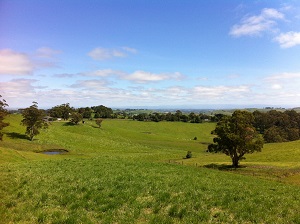
This module is designed as a starting point if you are planning to purchase or move to a new farm or are planning to move into horticulture. Its also just as good for taking a new look at an existing farm or horticultural activity. Factors considered will include climate and weather patterns, micro-climate, topography, land capability, land use potential, water supply and water quality, location, access and infrastructure, property history, soil health and fertility, biological hazards and potential. Other factors will be introduction to financial and production modelling, assessing and managing capital including financial capital, knowledge and skills and land and natural resources capital.
Outcomes: With your mentor assess the resources, capabilities, problems and potential for a proposed farm or, resources, progress and potential problems of an existing farm. Draw up a plan to develop the potential of a farm that will also take into account your objectives and capabilities. To guide you your mentor will take you through a case study of buying a dairy farm.
Cost $220. Allow 20 hrs Hours of study time. This module can be worked through in preparation for looking at properties or for reassessing an existing property. However study time and completion time can be flexible depending on needs. Tutor Dr Tim Apps
Topics:
1. Soils. Key characteristics of main soil types. Rehabilitation vs hazards.
2. Water. Saline water zones, water testing.
3. Climate. Climate change predictions and effect on farming.
4. Land potential. Inherent production capacity of land. Vegetation indicators.
5. Land capability. Land use zoning, physical characteristics.
6. Hazards. Things to look out for that are difficult to fix.
7. Land use. What to grow or not to grow. Looking at possibilities.
8. Resources vs liabilities. Assessing the balance of resources and planning.
9. Capital. Focusing financial, land and intellectual capital on realizing goals.
10. Case study – buying a dairy farm.